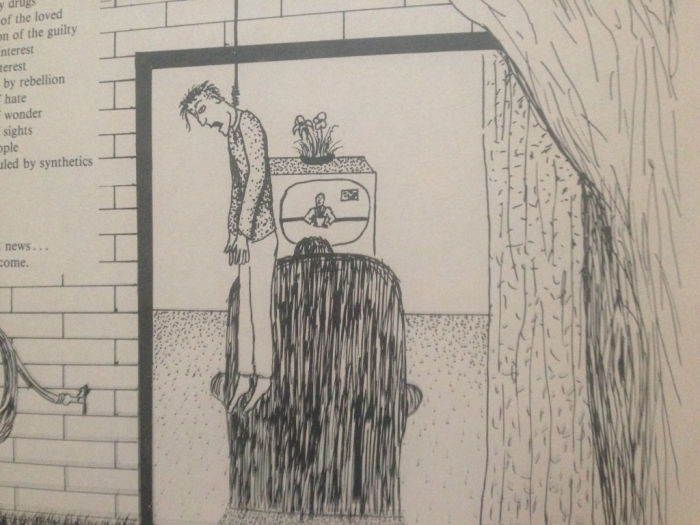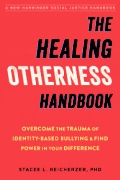The older we get, the more we tend to filter our high school experiences through the lens of nostalgia. At least I do. I remember episodes of adolescent depression, but that’s not where I choose to dwell.
I prefer instead to remember hanging out at the North Star Mall picnic court with my friends; cutting class to eat tacos at Abundios on Broadway; rayon pants that I purchased through layaway; and the saucy waitresses at my first job, Carlos Kelly’s Steaks and Seafood.
And that was indeed part of my reality. The good part that wasn’t at school.
I’d like to think everyone had at least some good experiences during adolescence.
My nostalgia lenses were ripped off my face and I was catapulted back to 1988 recently, when I uncovered a box in my mother’s shed. There were the notes from friends, music from my oboe solos, spirit ribbons (“Beat the Chargers!”, which we never did.) Then I found it: the creative writing club’s annual journal, called “The MacArthur Bulls Eye.” (Our mascot’s a brahma bull, you see).
Opening up the journal, partially to jog my memory of what it actually was, I saw that the poems, short stories, and drawings that were supplied by the art students, all neatly organized under the following Table of Contents:
Love
Solitude & Loneliness
Unrest & Compassion
Aging & Death
Search for Identity.
Seeing it first through my adult eyes that are trained to recognize signs and signals of depression, my reaction was, “The school published this; but did they alert the parents that these kids were in crisis?!”
Re-centering myself into awareness that this was published in 1988, just a year after silly shit like “pre-menstrual dysphoric disorder” had been removed as a psychiatric diagnosis, I settled down a bit. No, mental health awareness was a fools game in the 80s, and adolescent depression would have just been dismissed as teenage angst. These kids, whose parents were busting tail to send them to a good school, would have been seen as ingrates.
And there the trivializing of their hurt began.
I read the short stories and poems with titles like “Silence Smothers my Screams” and “I was terrified today,” complimented by drawings of trees that dripped blood. A dead man hung from a tree below a piece called “No Answer.” And it occurred to me that there was there was still a larger community of kids who felt different, Other, than I’d written about before.
I’ve talked a great deal about Otherness (see my blog from August 6), the first message we got that we were less than and inferior. Our sense of being different centered around experiences such as:
I was the visibly gay kid who didn’t fit in
I was the only dark-skinned child in our new neighborhood
I was the poor kid at a wealthy school
These are the sorts of things that are easily recognizable as a struggle, both for the people who lived through them and for others. Our childhood experiences as outsiders are often easier to articulate when we’re adults and choose our audience. We can put a name and location to the first time we knew we were Other. As such, we can draw in allies who may or may not share our experience; but who willingly can say with us: NO MORE.
For many of the Bulls Eye writers, that wasn’t true then, and it isn’t true now.
At least some if not most of these kids were clearly struggling with depression; and I’m wagering that many of them still are. The bigger challenge with depression for people who seem to come from privileged backgrounds is that other people don’t take it seriously. “What do you have to be depressed about? You have everything!”
This, of course, deepens the depressed person’s sense of isolation as it leads to self-blame about not feeling happier or more grateful, and a general inability to articulate any of this because no one seems to get it.
The sense of Otherness seems like an endless chasm.
The kids with whom I went to school are all adults in their 40s now and I imagine that many have children of their own. I hope they’re doing well, and I’m making attempts to reach out to as many as I can just to connect with them and let them know that I enjoyed their work, recently excavated as it was from my mother’s backyard shed.
Maybe it’s 27 years too late, and maybe it doesn’t matter much to them at this point. But I want them to know that I give witness to them and their story. For the one who are parents especially, I hope to also offer this:
Teenage angst is wondering what to wear on the first day of school or to prom; or whether that special girl or boy likes us as much as we like them.
Isolation, hopelessness, and preoccupation with death and dying is called adolescent depression. Your kid needs help. Now.
I’ve included a link to an extremely helpful guide for parents that’s published by the National Alliance on Mental Illness. Please pass along to anyone who may benefit from the information: http://www2.nami.org/Content/ContentGroups/CAAC/FamilyGuidePRINT.pdf
Stay tuned for part 2 of this series, where I’ll be talking about the social impact of high school in these kids’ lives.
* The drawing was one that appeared in the 1988 Macarthur Bulls Eye.


